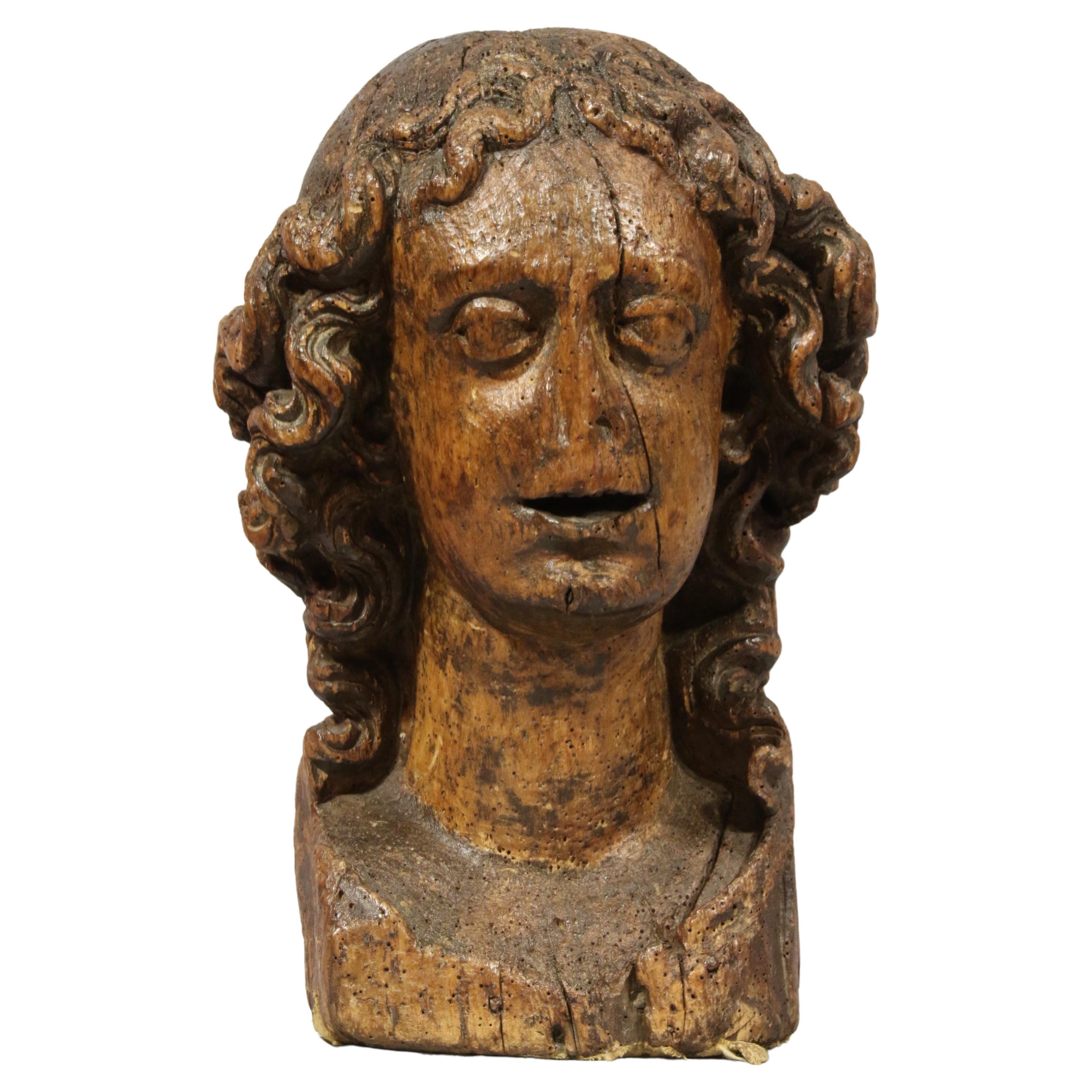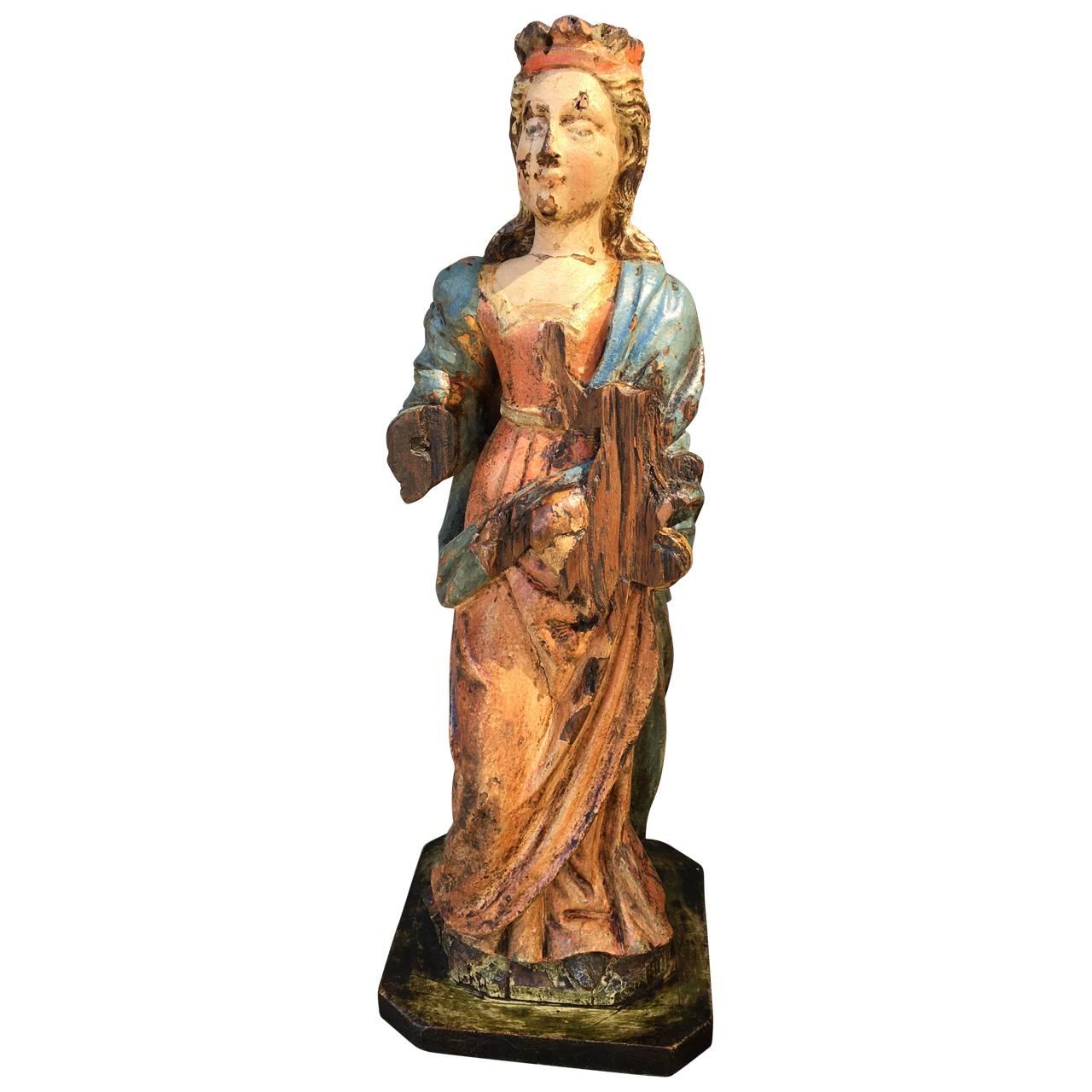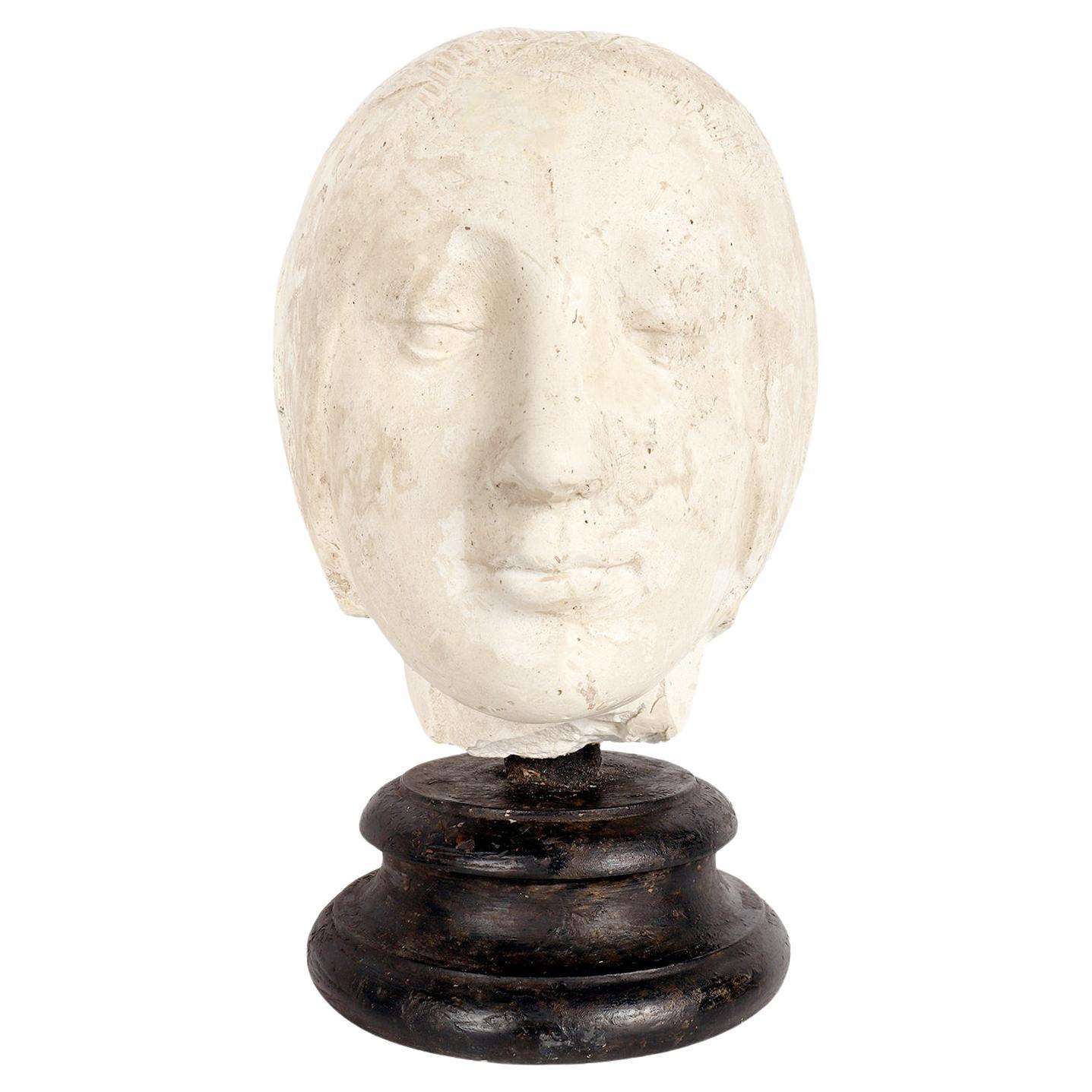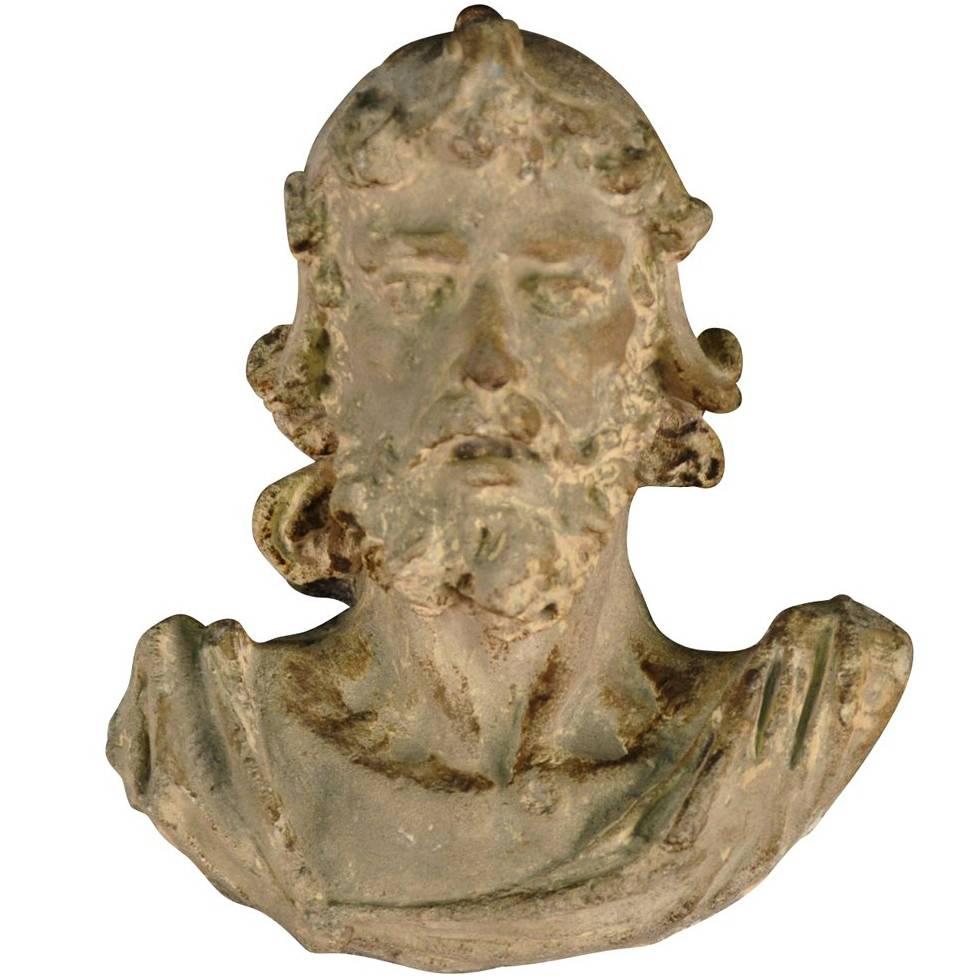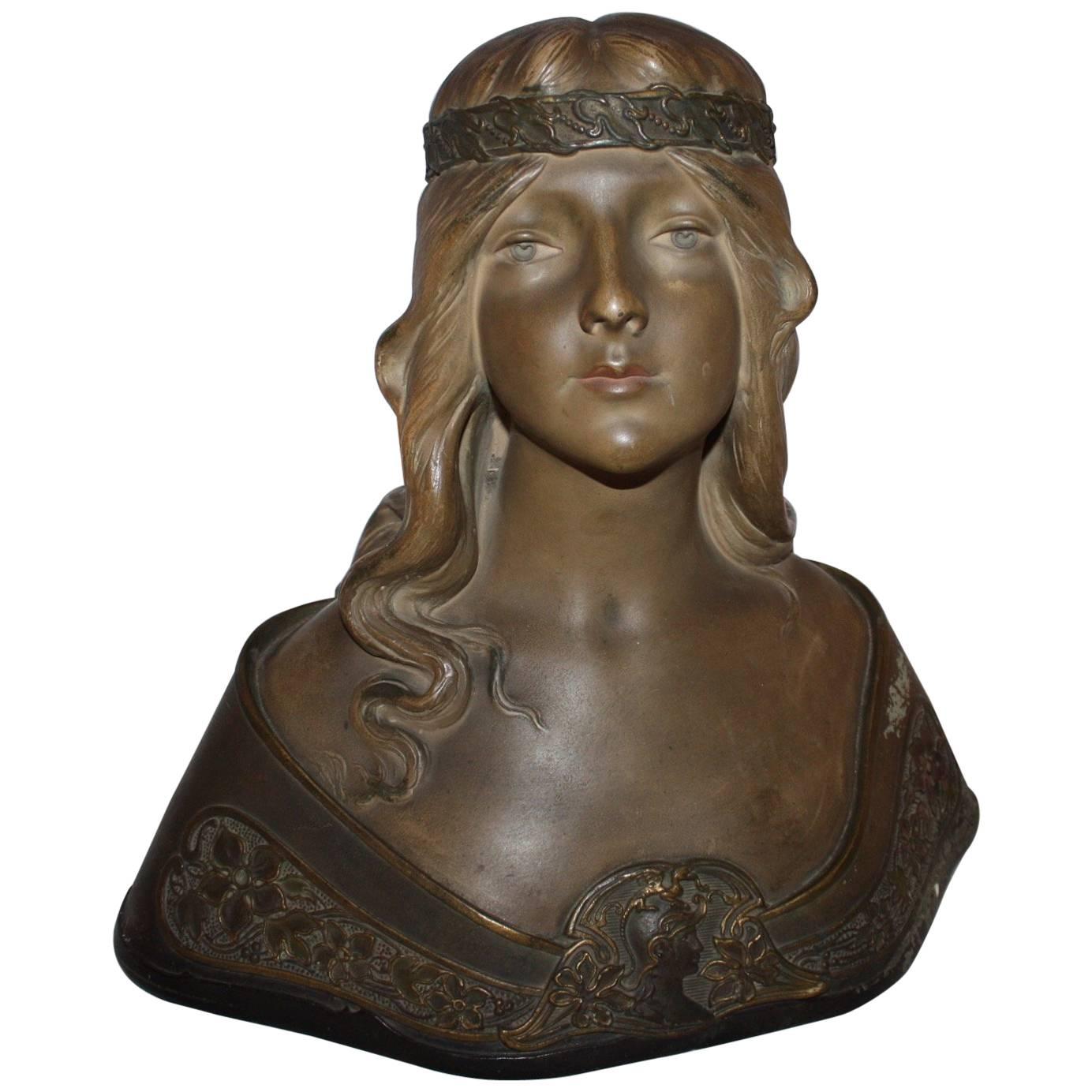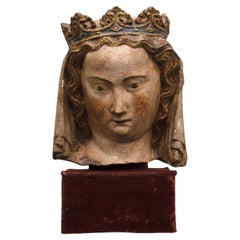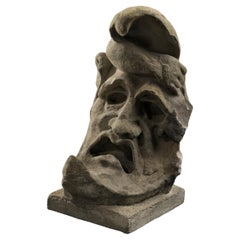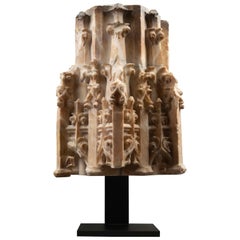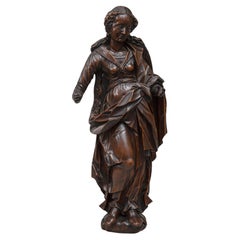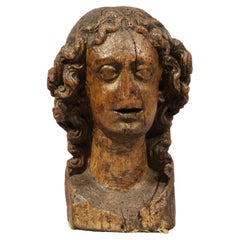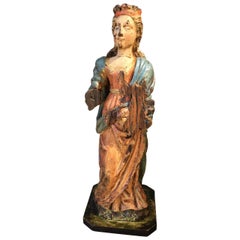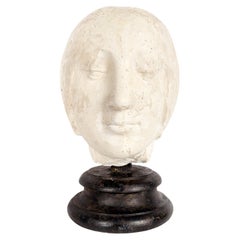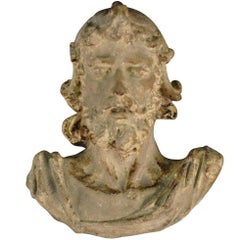Items Similar to Gothic crowned Head - Île de France, 14th century
Want more images or videos?
Request additional images or videos from the seller
1 of 7
Gothic crowned Head - Île de France, 14th century
$68,940.36
£51,339.06
€58,000
CA$95,181.48
A$105,522.74
CHF 55,456.32
MX$1,291,425.27
NOK 692,593.01
SEK 650,067.84
DKK 441,592.67
About the Item
Head of a crowned Virgin
Île-de-France, first half of 14th century.
H26 x 14 x 14 cm
Provenance :
- Private Collection, Paris France (1960)
- Private Collection Tuscany, Italy (1980)
Beautiful face with a slightly triangular shape and delicate features, almond-shaped eyes with tapered ends and finely outlined upper eyelids, high arched eyebrows; long straight nose, mouth with thin lips forming a slight smile; small round chin. Crowned with a fleur-de-lis adorned crown set with lozenge and rectangular cabochons placed on a short veil partially covering the golden and wavy hair, this Virgin impresses with her frontal stance and sophisticated stylization.
The quality of execution, finely drawn features, denote in the sculptor an uncommon sureness of hand, typical of Parisian workshops of the first half of the 14th century. This sculpture can be compared to a Virgin head made in Île-de-France during the first half of the 14th century, preserved at the Louvre and originating from the church of Saint Pierre aux Boeufs in Paris.
The work presents evident affinities with our sculpture: the slightly triangular-shaped head, adorned with a crown of cabochons ending in alternating fleurons; a short veil with flattened folds frames wavy hair; both are frontal, gazing serenely at the faithful. The almond-shaped eyes and delicate smile that marks the face with refined gentleness are stylistic features common to Virgins sculpted in Île-de-France around 1325-1350.
This head is remarkable for the preservation of its original polychromy, with its rich pink and golden hair, as well as for the quality of execution and the softness of the features.
- Dimensions:Height: 10.24 in (26 cm)Width: 5.52 in (14 cm)Depth: 5.52 in (14 cm)
- Style:Gothic (Of the Period)
- Materials and Techniques:
- Place of Origin:
- Period:
- Date of Manufacture:14th century
- Condition:Wear consistent with age and use.
- Seller Location:Bruxelles, BE
- Reference Number:1stDibs: LU6666239227642
About the Seller
5.0
Vetted Professional Seller
Every seller passes strict standards for authenticity and reliability
1stDibs seller since 2022
15 sales on 1stDibs
Typical response time: 1 hour
- ShippingRetrieving quote...Shipping from: Bruxelles, Belgium
- Return Policy
Authenticity Guarantee
In the unlikely event there’s an issue with an item’s authenticity, contact us within 1 year for a full refund. DetailsMoney-Back Guarantee
If your item is not as described, is damaged in transit, or does not arrive, contact us within 7 days for a full refund. Details24-Hour Cancellation
You have a 24-hour grace period in which to reconsider your purchase, with no questions asked.Vetted Professional Sellers
Our world-class sellers must adhere to strict standards for service and quality, maintaining the integrity of our listings.Price-Match Guarantee
If you find that a seller listed the same item for a lower price elsewhere, we’ll match it.Trusted Global Delivery
Our best-in-class carrier network provides specialized shipping options worldwide, including custom delivery.More From This Seller
View AllHead of a crowned Virgin - Lorraine, first half of 14th century
Located in Bruxelles, BE
Head of a crowned Virgin
Lorraine, first half of 14th century.
H26 x 14 x 14 cm
Provenance :
- Private Collection, Paris France (1960)
Private Collection Tuscany, Italy (1980)
Ex...
Category
Antique 15th Century and Earlier French Gothic Figurative Sculptures
Materials
Limestone
Renaissance grotesque in the shape of a half-moon - France, 17th century
Located in Bruxelles, BE
Large grotesque in the shape of a half-moon
On a posterior cement base
Limestone
France, 17th century
72 x 42 x 51 cm
Category
Antique 17th Century French Renaissance Statues
Materials
Limestone
Gothic Canopy, France, 15th Century
Located in Bruxelles, BE
Gothic canopy
France, 15th century
Alabaster, some traces of polychromy
33 x 23 x 20 cm
Provenance:
- Private collection Genève, Switzerland
...
Category
Antique 15th Century and Earlier French Gothic Figurative Sculptures
Materials
Alabaster
Statuette of the Virgin, South German circa 1600
Located in Bruxelles, BE
Statuette of the Virgin
South-German, circa 1600
sculpted wood
circa 1600
(right arm restored)
52 cm
Category
Antique 17th Century German Renaissance Religious Items
Materials
Wood
Renaissance Harpy - Italy, 16th century
Located in Bruxelles, BE
Renaissance Harpy
bronze
Italy, 16th century
15 x 12 x 5,5 cm
This expressive bronze figure represents a harpy, a mythological creature with the body of a bird and the head and tor...
Category
Antique 16th Century Italian Renaissance Figurative Sculptures
Materials
Bronze
16h century Griffin Head - Italy
Located in Bruxelles, BE
Griffin head
Italy, 16th century
On a modern metal stand
Measures: 20 x 29 x 21 cm (without the stand)
The griffin is a legendary creature with the body of a lion, the head an...
Category
Antique 16th Century Italian Renaissance Animal Sculptures
Materials
Marble
You May Also Like
14th Century Sculpture of the Head of an Angel from East of France or Rhineland
Located in Saint-Ouen, FR
This face with prominent eyes, open mouth and beautiful hairs with symetrical undulations may be the face of the Archangel Gabriel.
Category
Antique 15th Century and Earlier French Gothic Figurative Sculptures
Materials
Wood
Early 17th Century Sculpture
Located in Copenhagen, K
Amazing Baroque sculpture of a woman wearing a crown in original paint. Her hands are missing. Colors are untouched, recently cleaned off from a thick dark coating, I have images fro...
Category
Antique Early 17th Century French Baroque Figurative Sculptures
Materials
Oak
A cast depicting the head of Eleanor of Aragon by Laurana, Italy 1880.
Located in Milan, IT
Over the wooden black painted base is set a cast of Eleonora D’Aragona head. Copy of the marble sculpture by Laurana. Cast for drawing teaching in Academy. Italy circa 1880.
Category
Antique Late 19th Century Italian Figurative Sculptures
Materials
Plaster, Wood
16th Century Head Of A Noble
Located in Round Top, TX
A very striking 16th century statue - head of a nobleman - crafted from Roman concrete - opus caementicium. Roman concrete is durable due to its incorporation of volcanic ash, which...
Category
Antique 16th Century Italian Figurative Sculptures
Materials
Coade Stone
Magnificent 19th Century French Bust
Located in Stockbridge, GA
Magnificent 19th century French bust, signed and dated.
Category
Antique Late 19th Century French Louis Philippe Busts
Materials
Terracotta
15th Century Gothic Virgin
Located in Madrid, ES
15th century Gothic Virgin
Gothic Virgin of the 15th century Virgin in carved and polychrome wood of the 15th century. In its original state, muse...
Category
Antique 15th Century and Earlier Figurative Sculptures
Materials
Wood
$20,800
More Ways To Browse
Antique Crowns
Italian Crown Crown
Antique French Crown
With Crown Carved
Antique Stone Head
Golden Crown
Antique Gothic Frame
Italian Gothic Furniture
Italian Gothic
Gothic Church Furniture
Church Arch
15th Century Polychrome Sculpture
Polychrome Virgin
Fleuron France
Antique Wax Seals Gold
Art Deco Goldscheider Figurines
Goldscheider Dancer
Mermaid Sculptures

